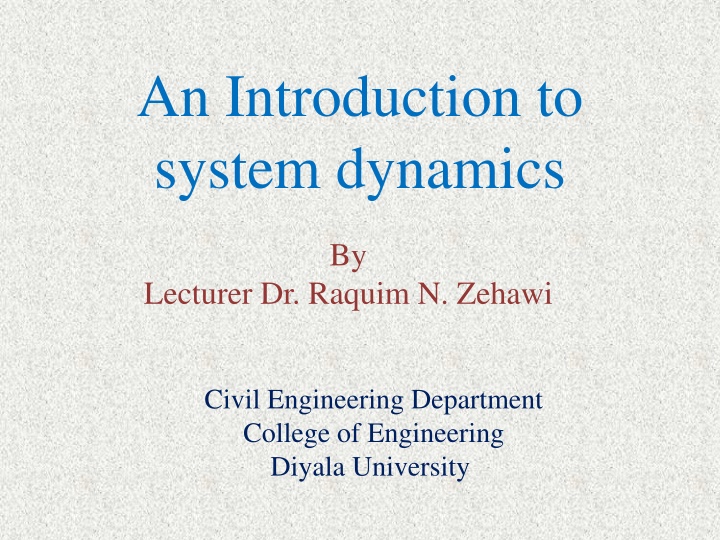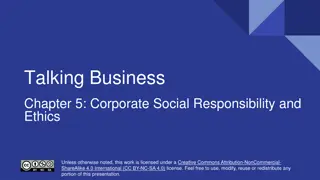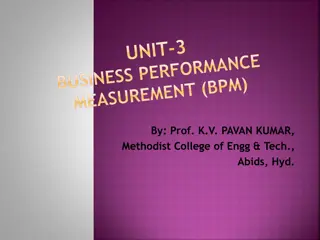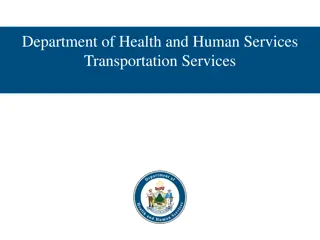Ethical Performance Assessment in Business: Measures & Benefits
Ethics in business is crucial for maintaining standards of conduct. This presentation explores tools for ethical performance assessment, benefits of ethical measures, and how to track workplace ethical performance through customer complaints and employee surveys.
Download Presentation

Please find below an Image/Link to download the presentation.
The content on the website is provided AS IS for your information and personal use only. It may not be sold, licensed, or shared on other websites without obtaining consent from the author.If you encounter any issues during the download, it is possible that the publisher has removed the file from their server.
You are allowed to download the files provided on this website for personal or commercial use, subject to the condition that they are used lawfully. All files are the property of their respective owners.
The content on the website is provided AS IS for your information and personal use only. It may not be sold, licensed, or shared on other websites without obtaining consent from the author.
E N D
Presentation Transcript
An Introduction to system dynamics By Lecturer Dr. Raquim N. Zehawi Civil Engineering Department College of Engineering Diyala University
The , system dynamics was developed by professor (Jay Wright Forrester) of the Massachusetts institute of technology in 1950s His effort was oriented towards tackling the concern about unmanageable complexities in real systems through the application of the control system theory on them
At first the approach was termed Industrial Dynamics in which the dynamics of industrial system is modeled The foundations of Industrial Dynamics are: The information feedback control theory The modeling of fundamental decision-making processes The experimental approach to system analyses The use of digital computer simulation
Next: the theory was generalize into the (Principles of Systems) The concept of rates and levels where introduces for first time In the next step: an urban system was introduced This model shows the growth and decay of the urban system It encompasses the general characteristics of complex systems Then: the methodology was applied on global scale by the model WORLD 1 and its revised version WORLD 2 Formulated as the bases for Project on the Predicament of Mankind The first system dynamics model of the world s socioeconomic system
System dynamics is an approach to understanding the dynamic behavior of complex systems over time It deals with structures of social systems It also represents this system structure in form of diagrams and mathematical equations It deals with almost any complex system that changes over time
Combine the strengths of the ability of computer models in process information Avoid the weakness of mind inability to manipulate huge amount of information Computer Simulation Low Cost Computation Dynamic Behavior & Improvement of Management Principals of Structures Feedback Theory of Cybernetics Principals of Selecting Info. Traditional Management Information Experience Judgement
Open Loop Impression of the World Information about problem Result Action Wrong image of the World Closed Loop Structure of the World Action Information about problem Result Appropriate image of the World
Policy Level
Capturing feedback processes Seeing the structures that underlie complex systems providing insight to the dynamic interactions System Dynamics provide the capability of recognizing patterns and interrelationships that can be managed in more effective and efficient ways
Reactive Events and Decisions Adaptive Patterns of Behavior Generative System Structure
Relate discrete events to patterns of behavior Focusing on policy structure rather than individual decisions
Dynamic Thinking (graphs over time) Causal Thinking (feedback loops) Stock-and-Flow Thinking (accumulation) Thinking endogenously ( system as cause)
Problems are defined in terms of graphs over time Important Variables Historical Data Graphs are built for: Anticipated Dynamics Preferred Dynamics These graphs are used to focus systems thinking and modeling
A causal loop represents a building block that has its own pattern of behavior Positive (Reinforcing)
Reinforcing Feedback Jon s suspicion (R) Garfield s happiness
They are used as bases for developing a quantitative model Every system has these two concepts ( only two) + + Births Deaths Population Causal Loop - + a Stock and Flow Population Deaths Births b
a state variable that changes over time by accumulating or integrating rates (flows) used to represent the real-world processes such as stocks of material, knowledge, people, or money. . . . . etc. = ( ) dt T S F F i o t o St = value of stock at time t. Fi = the sum of the inflow rates. Fo = the sum of the outflow rates. t = time.
Provides the basic representation of the change in stock values Resembles the movement from one stock to another It is a directional variable that has a start and ending d t= S F t d t St = value of stock at time t. Ft = the flow rate at time t. t = time.
o Stock (Level) o Flow (Rate) Tangible or intangible Tangible or intangible Measured in units Measured in units/time Accumulation (Integral) Rate of change (Derivative) Add inputs Subtract outputs Sometimes considered stationary in a period of time Difficult do determine instantaneous Sometimes considered in motion Examples: Bank account, inventory, tank, knowledge. Examples: interest, water flow, births, deaths.
Usually represented by a curved arrow Means that the value of the originating variable influences the value of the destination variable An increase in A makes B higher than it would have been without the change. An increase in C makes D lower than it would have been without the change.
An additional variable usually introduced to clarify the structure and process of the model Any dynamic variable that is computed from other variables at a given time Often presented as intermediate concepts or calculations utilized to determine the values of flows
Initial bank account Withdrowl rate Intrest rate BANK ACCOUNT intrest withdrowl 0.05 0 0.12 0.04 0 0.12 Intrest rate Withdrowl rate BANK ACCOUNT 200,000 100,000 $ 0 0 18 36 54 72 90 108 Time (Month) BANK ACCOUNT : Current
Population & Food birth rate normal death rate normal population initial Population births deaths Population & Food birth rate normal 0.04 death rate normal 0.028 population initial 14000 Population births deaths
Population & Food birth rate normal death rate normal population initial Population births deaths crowding deaths crowding multiplier land area population density normal <deaths crowding mult tab>
Population 10 B 7.5 B People 5 B 2.5 B 0 1900 1920 1940 1960 1980 2000 Time (Year) 2020 2040 2060 2080 2100 Population : Current
Population & Food births material mult tab deaths pollution mult tab birth rate normal death rate normal <pollution ratio> <material standard of living> Population births deaths births material multiplier deaths pollution multiplier births pollution multiplier deaths material multiplier population initial births pollution mult tab births food multiplier deaths crowding multiplier deaths food multiplier crowding births crowding multiplier deaths material mult tab births food mult tab land area population density normal <food crowding mult tab> births crowding mult tab deaths crowding mult tab <material standard of living> deaths food mult tab <pollution ratio> food crowding multiplier capital agriculture fraction indicated tab food ratio food pollution multiplier food pollution mult tab capital agriculture fraction indicated food per capita potential <capital ratio agriculture> food per capita normal food coefficient food per capita potential tab
Population 6 B 4.5 B People 3 B 1.5 B 0 1900 1920 1940 1960 1980 2000 Time (Year) 2020 2040 2060 2080 2100 Population : Current Population : C:\Users\Public\Vensim\models\sample\VENAPP\template\Current























